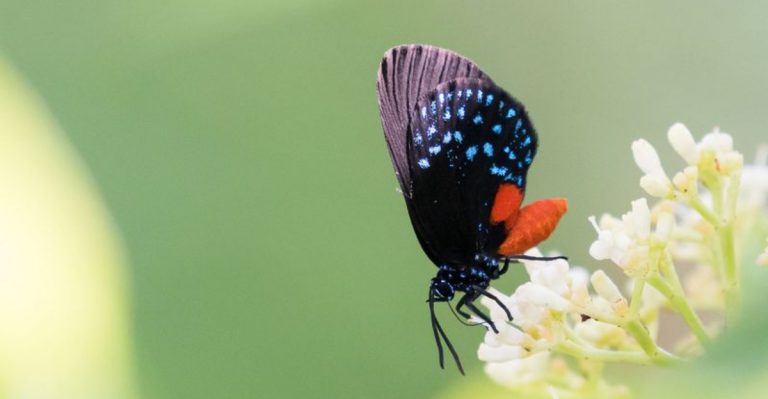The Largest Wild Cats Ever Spotted In These U.S. States
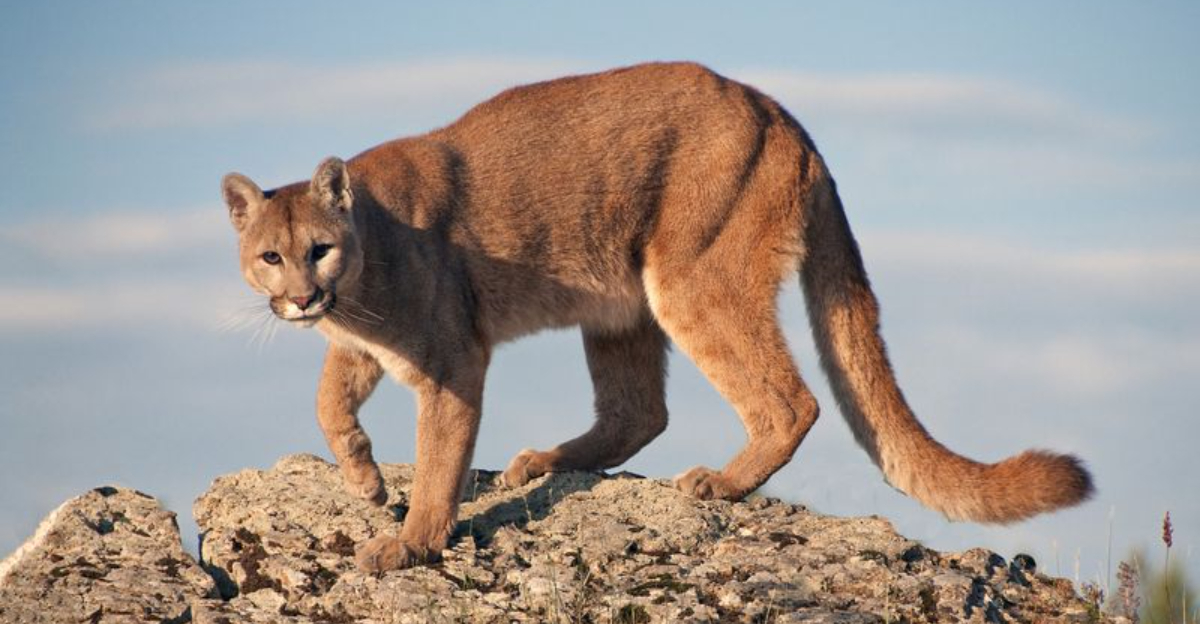
America’s wilderness hides some impressive feline predators, from the massive mountain lions of the West to the stealthy bobcats of the East.
These wild cats have adapted to various environments across the country, each playing a vital role in their local ecosystem. Let’s explore the largest wild cats that have been documented in different states across America.
1. Alabama – Bobcat
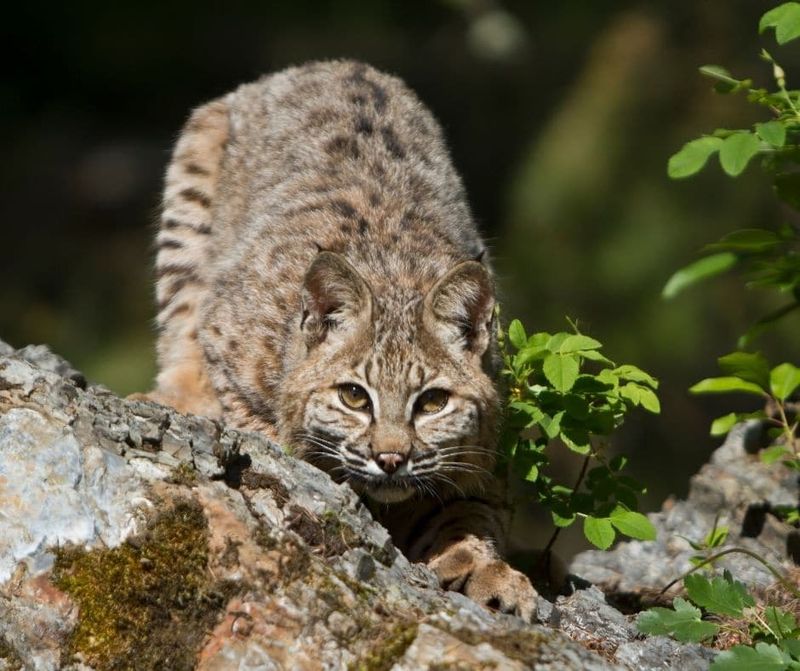
Alabama’s woodlands shelter muscular bobcats weighing up to 30 pounds. These amber-eyed hunters thrive in mixed forests and swamplands throughout the state.
Local wildlife cameras frequently capture these spotted predators prowling at dawn and dusk. Their population remains stable despite human encroachment, a testament to their remarkable adaptability.
2. Alaska – Canada Lynx
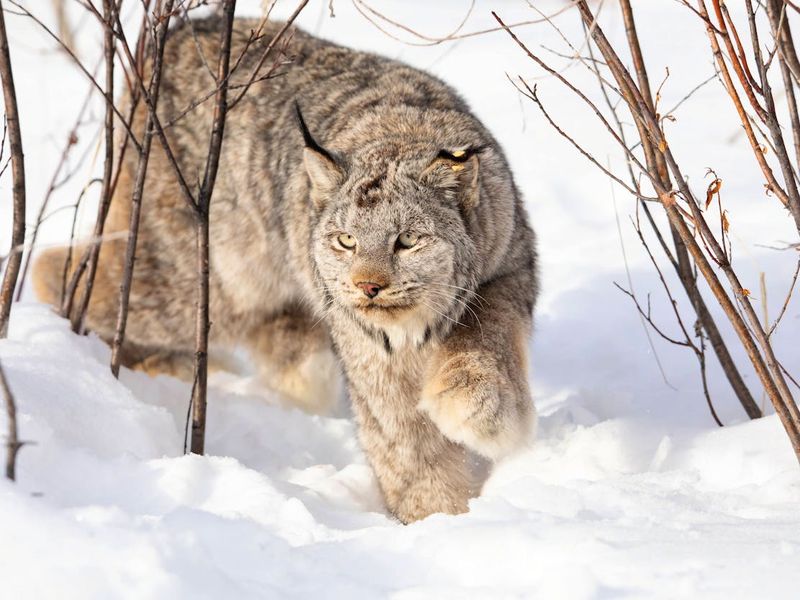
Magnificent Canada lynx rule Alaska’s snowy landscape, weighing up to 40 pounds with massive snowshoe-like paws. Their thick silver-gray fur provides perfect camouflage in winter conditions.
Specialized hunters, they primarily track snowshoe hares through boreal forests. Their distinctive triangular ears topped with black tufts serve as excellent sound amplifiers in the quiet northern wilderness.
3. Arizona – Cougar
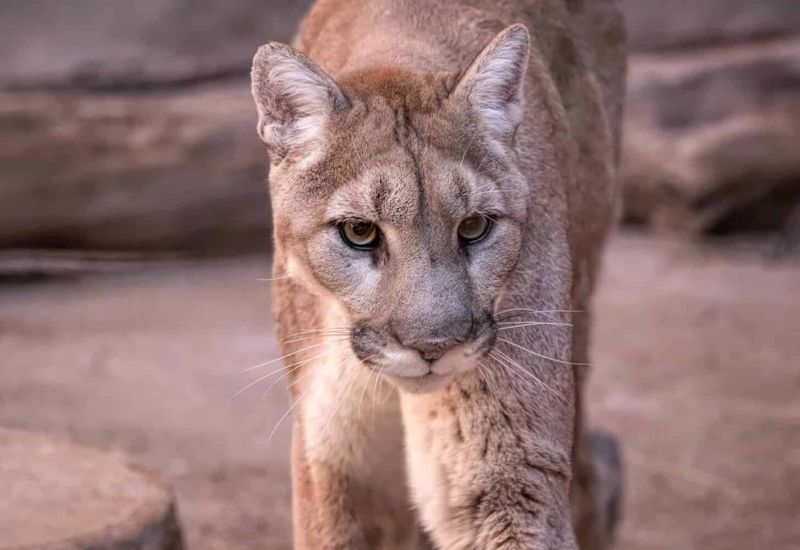
Arizona’s rugged canyons and mountains harbor powerful cougars reaching 150 pounds. These tawny predators maintain vast territories spanning up to 370 square miles in the state’s diverse landscapes.
Remarkably athletic, they can leap 40 feet horizontally and 15 feet vertically. Sightings near populated areas have increased recently, highlighting the complex relationship between human development and wildlife habitats.
4. Arkansas – Bobcat
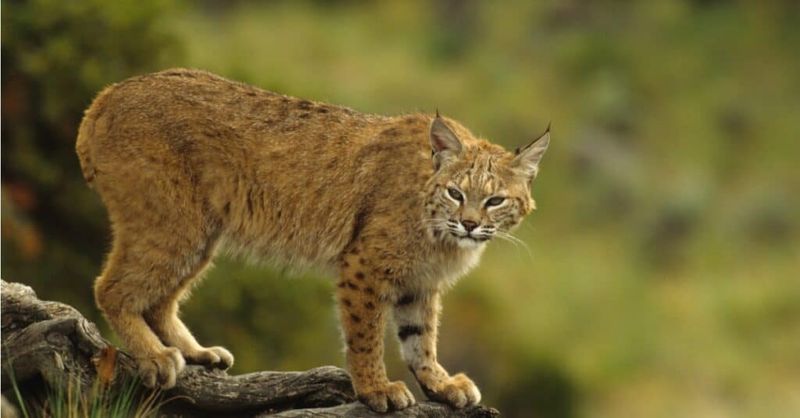
Arkansas’s dense forests conceal sturdy bobcats reaching 30 pounds. Unlike their larger cougar cousins, these adaptable felines thrive across the state’s varied terrain.
Nocturnal hunters, they stalk rabbits, rodents, and occasionally deer. Their distinctive bobbed tail, for which they’re named, serves as a perfect balancing aid when navigating fallen logs and rocky outcrops throughout the Natural State.
5. California – Mountain Lion
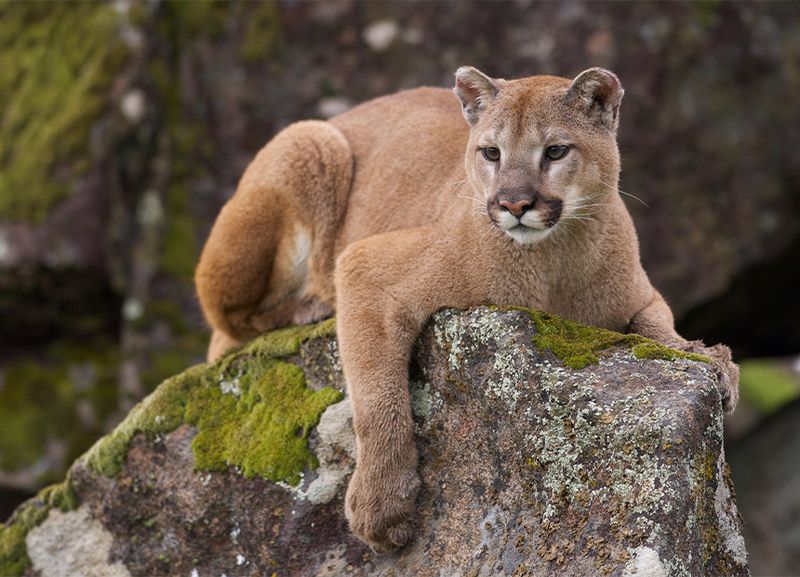
California’s diverse habitats support impressive mountain lions weighing up to 180 pounds. From coastal mountains to Sierra Nevada forests, these muscular cats maintain extensive territories.
Remarkably elusive despite their size, they’re rarely spotted by hikers. Recent research using GPS collars reveals their complex movements through increasingly fragmented habitats, highlighting conservation challenges as human development expands into wild areas.
6. Colorado – Cougar
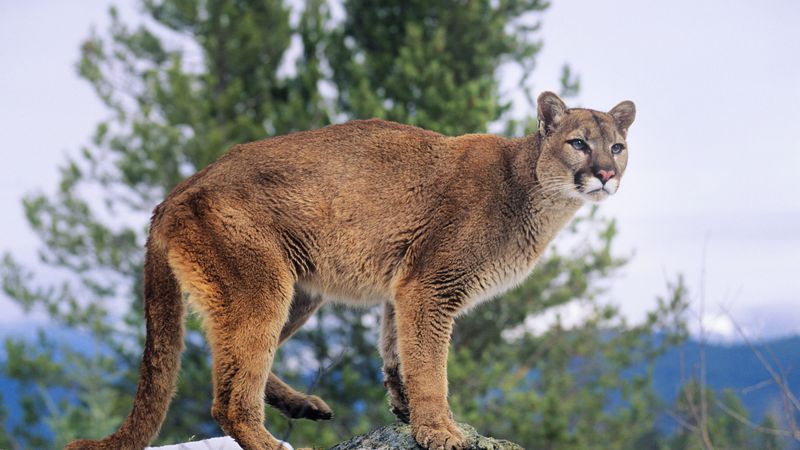
Colorado’s mountainous terrain harbors powerful cougars reaching 150 pounds. These solitary hunters patrol vast territories spanning the state’s diverse elevations.
Perfectly adapted to mountain living, they navigate steep slopes with remarkable agility. The state’s Division of Wildlife estimates approximately 4,500 cougars inhabit Colorado, making them the most significant wild predator in the Rocky Mountain ecosystem.
7. Florida – Florida Panther
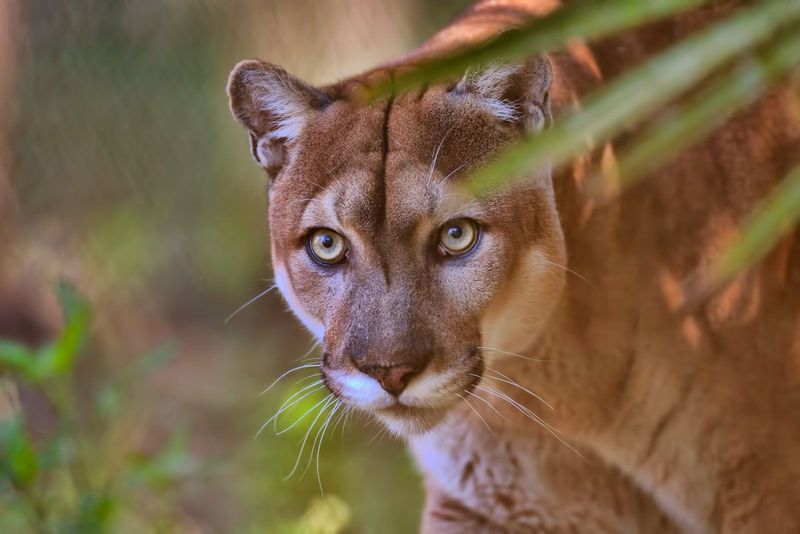
Florida’s endangered panthers represent the last remaining puma population east of the Mississippi. Males can reach 160 pounds, though they average closer to 130 pounds in the subtropical environment.
Once down to just 20 individuals, conservation efforts have helped the population rebound to approximately 200 cats. Their preferred habitats include cypress swamps and pine flatwoods where they hunt deer and wild hogs.
8. Georgia – Bobcat
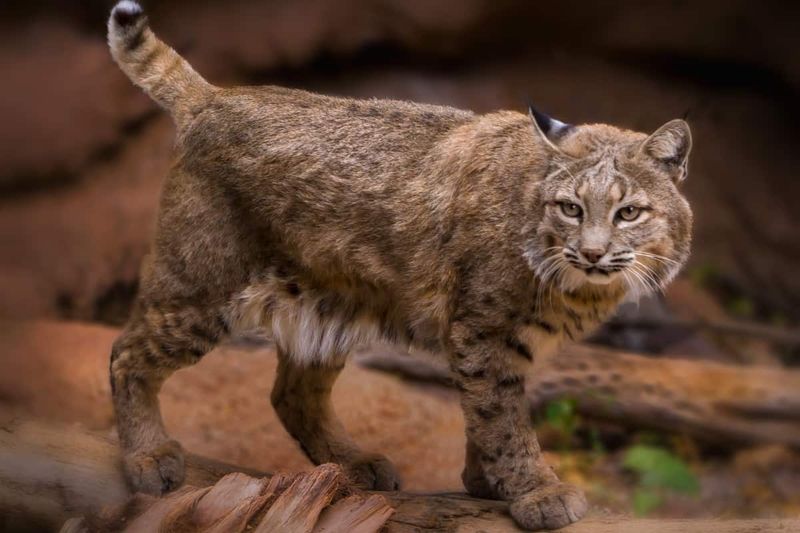
Georgia’s diverse landscapes support robust bobcats weighing up to 30 pounds. From Appalachian forests to coastal plains, these spotted hunters maintain healthy populations despite human development.
Masters of stealth, they’re rarely spotted despite their widespread presence. Their ability to thrive in forest fragments near suburban areas demonstrates remarkable adaptability, though they prefer remote wilderness with dense undergrowth for hunting and raising young.
9. Hawaii – Feral Cat

Hawaii lacks native wild cats, but feral domestic cats have established significant populations across the islands. Some males reach 20 pounds, becoming formidable predators in the isolated ecosystem.
Originally introduced by European settlers, these adaptable felines now pose serious conservation challenges. Their predation impacts native bird populations, particularly ground-nesting species that evolved without mammalian predators, making them a complicated conservation issue.
10. Idaho – Cougar
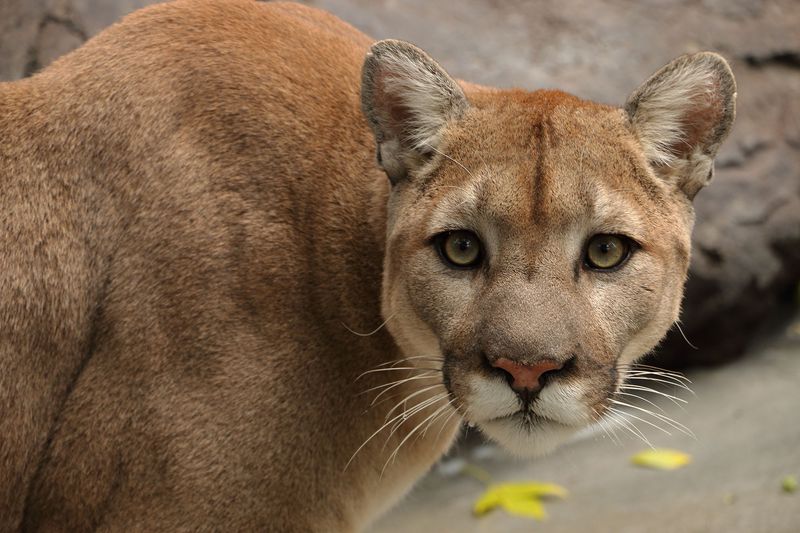
Idaho’s wilderness supports substantial cougar populations reaching 150 pounds. These powerful cats roam the state’s mountains and forests, playing crucial roles in ecosystem balance.
Skilled hunters, they primarily target elk and deer across their territories. Idaho Fish and Game estimates approximately 2,000 cougars inhabit the state, with monitoring programs tracking population health through mandatory harvest reporting and research initiatives.
11. Illinois – Bobcat
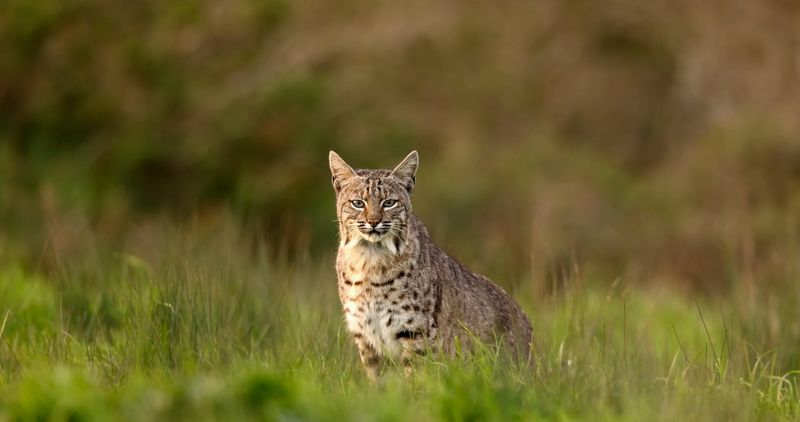
Illinois bobcats have made a remarkable comeback, with some individuals reaching 35 pounds. Once nearly eliminated from the state, these resilient cats now inhabit all 102 counties.
Southern Illinois provides particularly suitable habitat with its rugged terrain and forest cover. Their diet varies seasonally, focusing on rabbits, squirrels, and occasionally ground-nesting birds, demonstrating their ecological importance as mid-sized predators.
12. Indiana – Bobcat
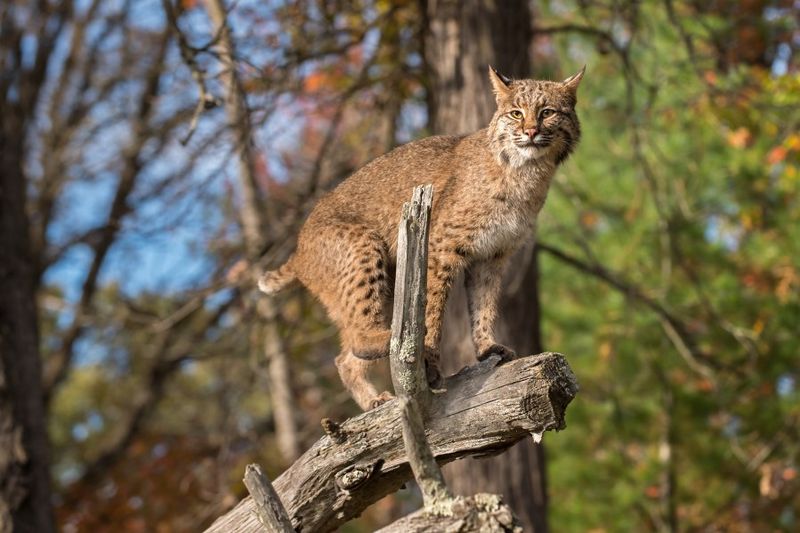
Indiana’s southern forests harbor secretive bobcats weighing up to 30 pounds. After decades of decline, these spotted predators have steadily reclaimed territory across the state’s hillier regions.
Trail cameras frequently capture their distinctive silhouettes during dawn and dusk hours. Conservation efforts have helped their population expand northward, though sightings remain relatively rare due to their naturally cautious nature and preference for dense woodland habitats.
13. Iowa – Bobcat
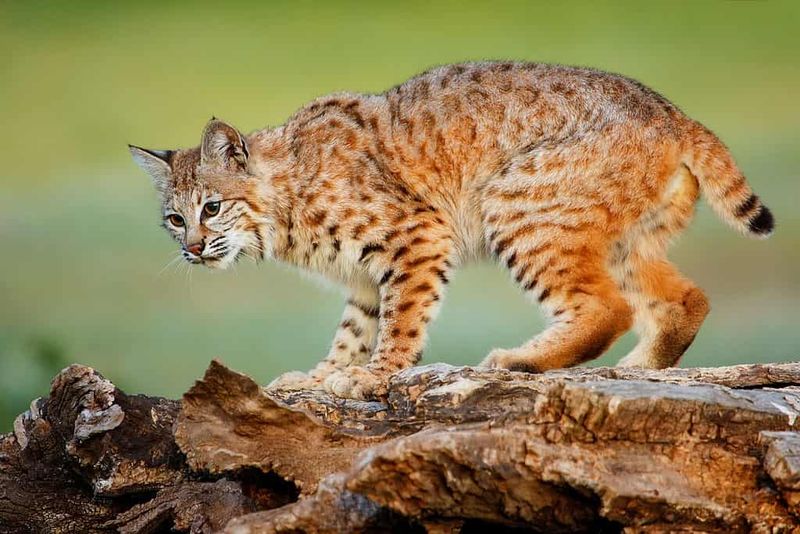
Iowa’s southern and western counties support thriving bobcat populations reaching 35 pounds. After disappearing in the early 1900s, these adaptable predators have naturally recolonized suitable habitats.
River corridors provide ideal travel routes between fragmented woodlands. Their comeback represents a conservation success story, with careful management allowing sustainable hunting while monitoring population health through research partnerships with state universities.
14. Kansas – Bobcat
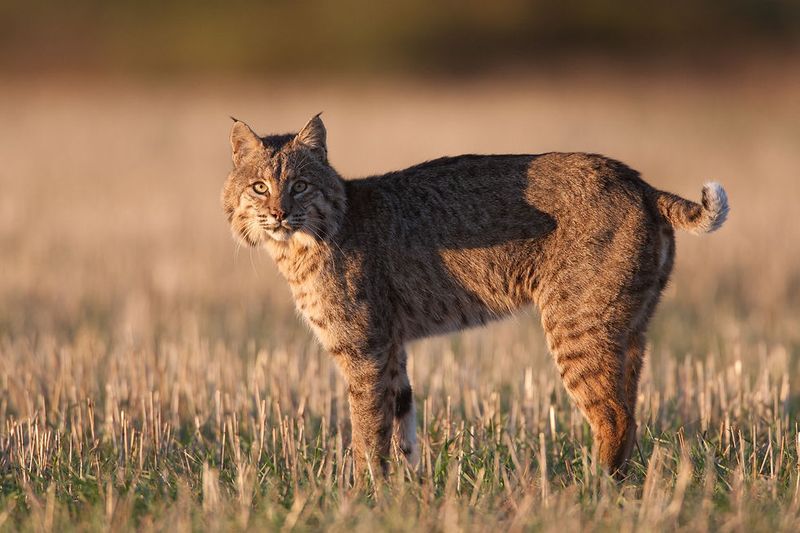
Kansas prairies and woodlands support robust bobcats weighing up to 35 pounds. These versatile hunters thrive in the state’s diverse landscapes, from western canyons to eastern forests.
Remarkably adaptable, they’ve adjusted to agricultural landscapes by utilizing hedgerows and riparian corridors. Kansas Department of Wildlife research indicates healthy populations statewide, with particular concentration in areas with mixed terrain offering both hunting opportunities and secure denning sites.
15. Kentucky – Bobcat
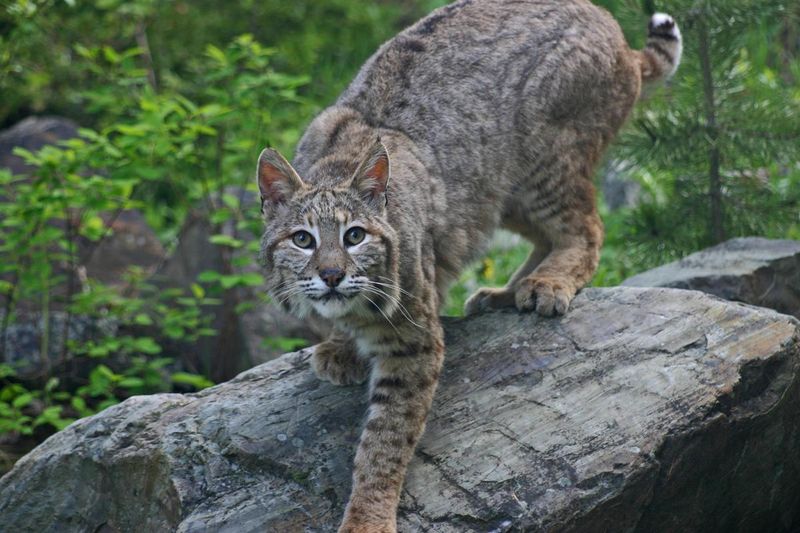
Kentucky’s Appalachian region harbors secretive bobcats reaching 30 pounds. These muscular felines patrol rugged terrain throughout the eastern mountains and western forests.
Their distinctive spotted coats provide perfect camouflage among dappled forest shadows. Kentucky Department of Fish and Wildlife Resources monitors their population through hunter harvests and field research, documenting stable numbers despite habitat fragmentation challenges.
16. Louisiana – Bobcat
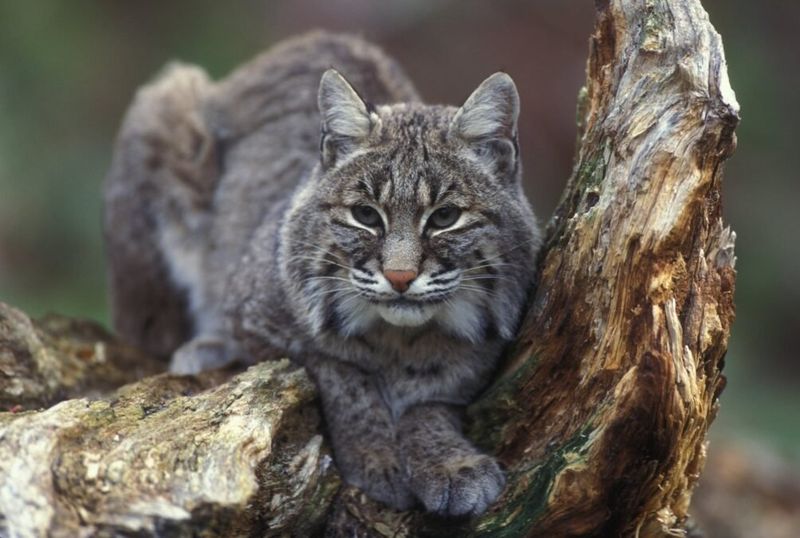
Louisiana’s diverse habitats support powerful bobcats weighing up to 30 pounds. From bayou swamps to piney uplands, these adaptable hunters maintain healthy populations throughout the state.
Their ability to swim makes them particularly suited for Louisiana’s watery landscape. Research indicates they play crucial roles in controlling nutria populations in wetland areas, demonstrating their ecological importance beyond their status as the state’s largest native wild cat.
17. Maine – Canada Lynx
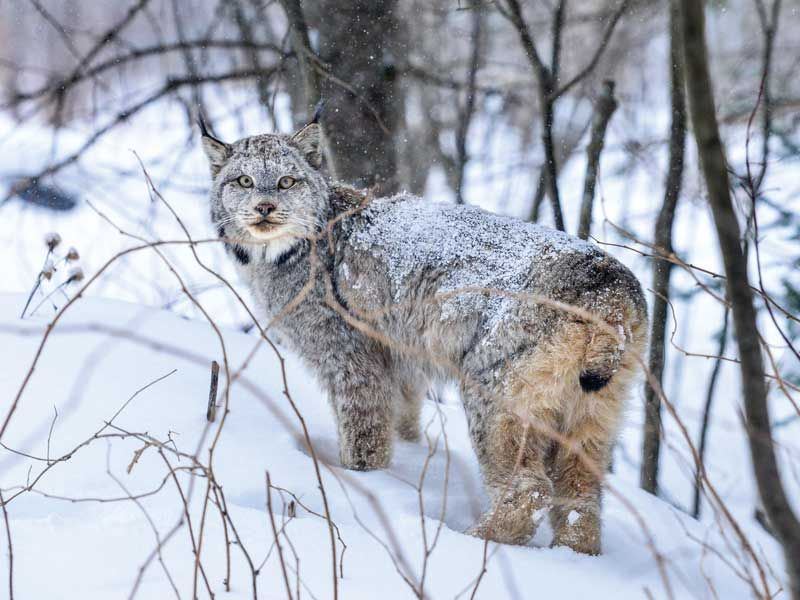
Maine’s northern forests provide perfect habitat for Canada lynx weighing up to 40 pounds. Their enormous paws act like natural snowshoes, giving them hunting advantages in deep snow conditions.
Specialized snowshoe hare hunters, their population cycles follow prey abundance. Recent conservation efforts have helped strengthen their numbers after historic declines, with particular focus on protecting the mature spruce-fir forests they depend on for hunting and raising kittens.
18. Maryland – Bobcat
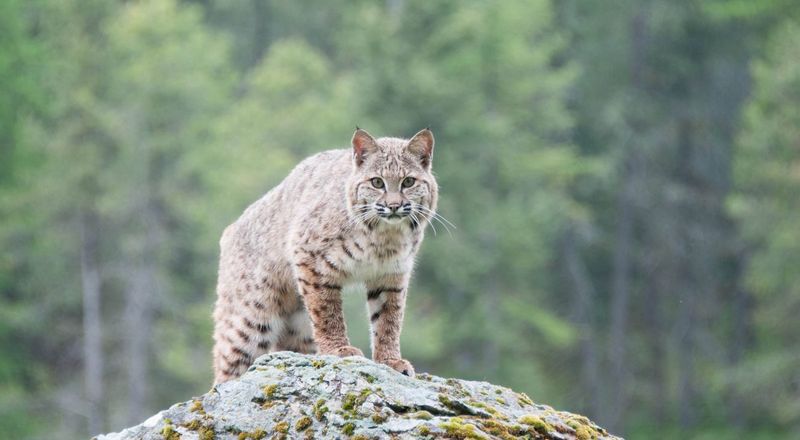
Maryland’s western mountains shelter elusive bobcats reaching 30 pounds. These stealthy predators maintain territories primarily in Garrett and Allegany counties, where forest cover remains most extensive.
Remarkably adaptable, they’ve survived despite significant habitat changes over centuries. Recent wildlife camera studies have documented their presence in areas where they were previously thought extirpated, suggesting their population may be more resilient than once believed.
19. Massachusetts – Bobcat
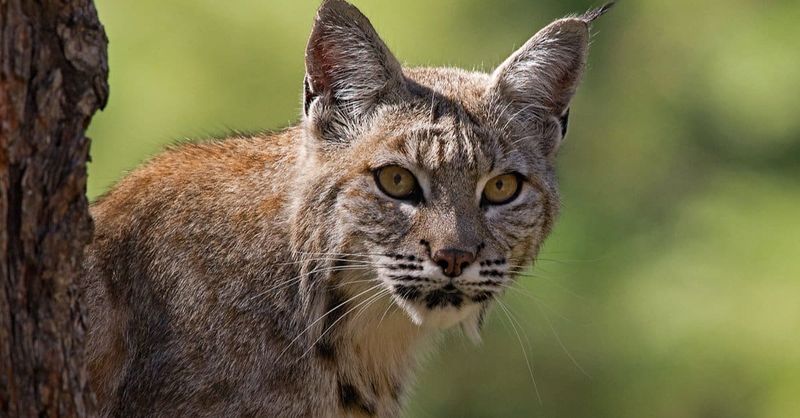
Massachusetts forests conceal muscular bobcats weighing up to 30 pounds. Once nearly eliminated from the state, these resilient hunters have steadily reclaimed territory across central and western regions.
Surprisingly adaptable, some individuals now inhabit suburban areas with adequate forest fragments. MassWildlife tracking studies reveal their remarkable ability to navigate developed landscapes while remaining largely undetected, using culverts and underpasses to cross highways safely.
20. Michigan – Bobcat
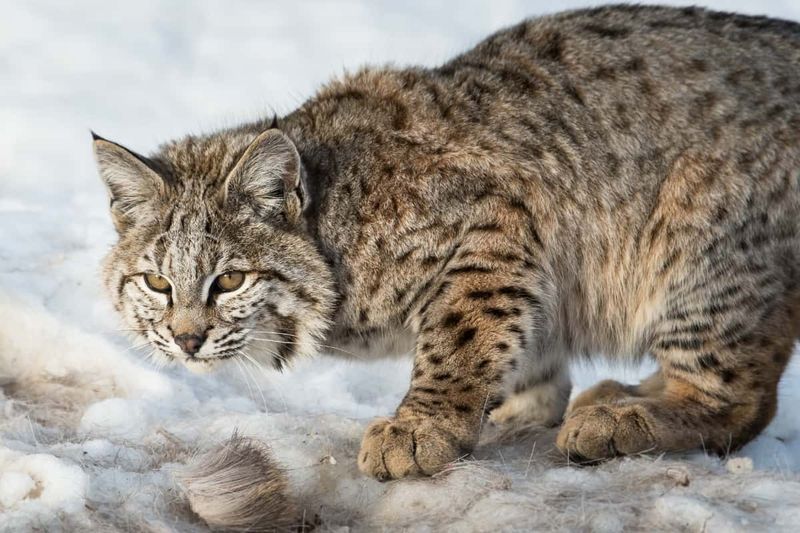
Michigan’s northern wilderness supports hardy bobcats reaching 30 pounds. The Upper Peninsula hosts particularly robust populations due to extensive forest cover and limited human development.
Winter brings unique challenges with deep snow limiting mobility. Michigan DNR research shows they’ve adapted by focusing on snowshoe hares and grouse during winter months, while expanding their diet to include more diverse prey during warmer seasons.
21. Minnesota – Canada Lynx
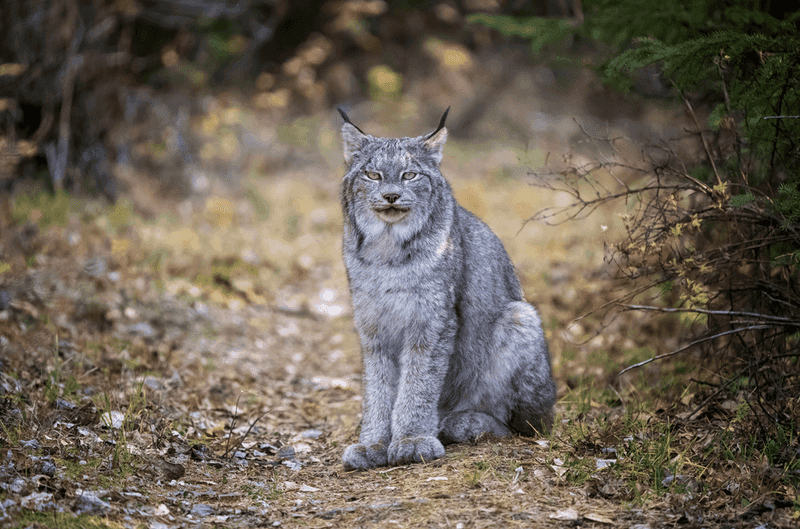
Minnesota’s boreal forests harbor magnificent lynx weighing up to 40 pounds. Their specialized features—enormous paws, thick fur, and tufted ears—perfectly suit northern environments.
Primarily snowshoe hare specialists, their hunting success depends on snow conditions. Minnesota represents the southern edge of their range in the continental United States, making them particularly vulnerable to climate change impacts that alter snow patterns and prey availability.
22. Mississippi – Bobcat
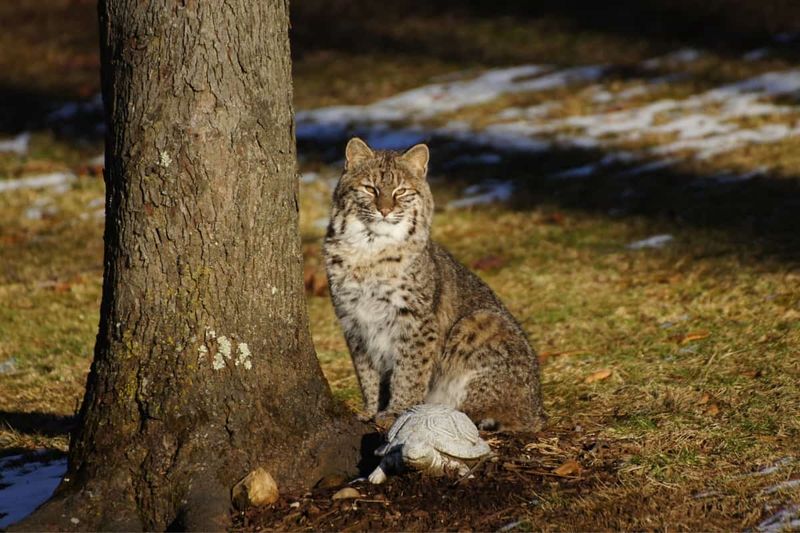
Mississippi’s diverse landscapes support sturdy bobcats weighing up to 30 pounds. From Delta swamps to piney uplands, these adaptable hunters maintain territories throughout the state.
Ancient survivors, they’ve persisted despite centuries of habitat change. Mississippi Department of Wildlife research indicates healthy populations statewide, with particular concentration in areas with mixed forests and agricultural edges providing optimal hunting opportunities.
23. Missouri – Bobcat
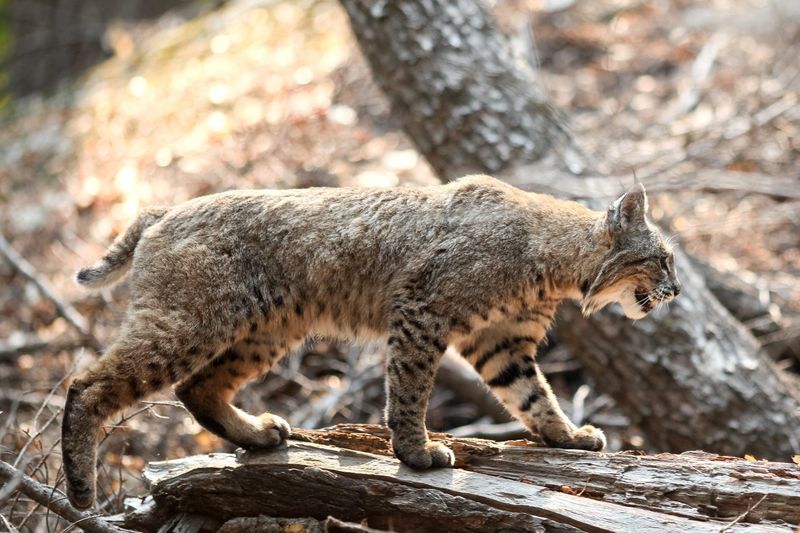
Missouri’s varied terrain supports robust bobcats reaching 35 pounds. These muscular predators thrive in the Ozark highlands where rocky outcrops provide perfect denning sites.
Remarkable comeback artists, they’ve recovered from historical persecution. Missouri Department of Conservation studies show they’ve adapted to fragmented habitats by utilizing corridors along streams and rivers, allowing them to maintain genetic connectivity between isolated populations.
24. Montana – Cougar
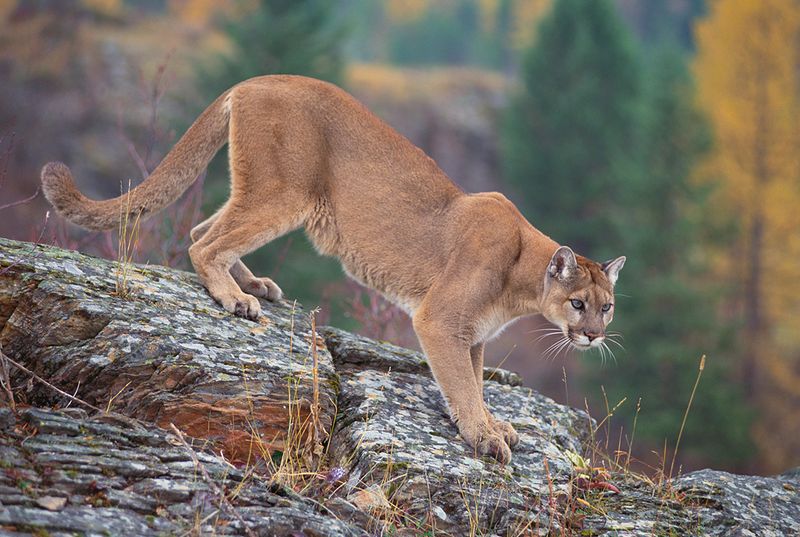
Montana’s vast wilderness supports impressive cougars weighing up to 150 pounds. These powerful predators roam throughout the state’s mountains and forests, maintaining crucial ecological roles.
Skilled hunters, they primarily target elk and deer across enormous territories. Montana Fish, Wildlife & Parks estimates approximately 5,000 mountain lions inhabit the state, representing one of the healthiest populations in the country due to extensive connected habitats.
25. Nebraska – Cougar
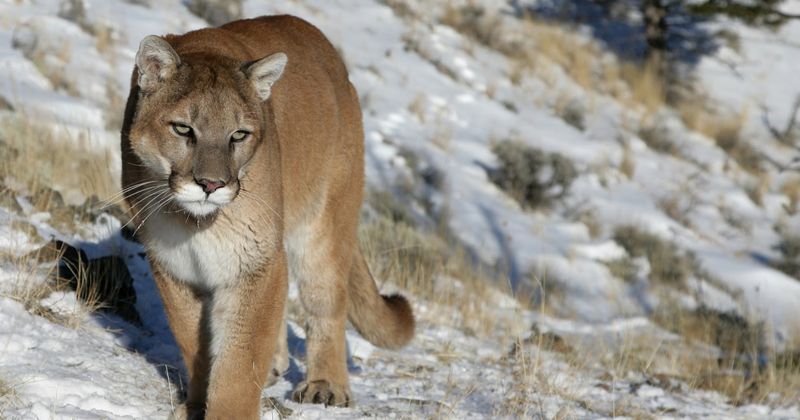
Nebraska’s western region hosts expanding cougar populations reaching 150 pounds. After disappearing in the early 1900s, these magnificent cats began naturally returning to the Pine Ridge area in the 1990s.
River corridors serve as natural highways for eastward expansion. Nebraska Game and Parks Commission tracks confirmed sightings, documenting their gradual recolonization of historical range, particularly in rugged areas along the Niobrara River and Missouri River bluffs.
26. Nevada – Cougar
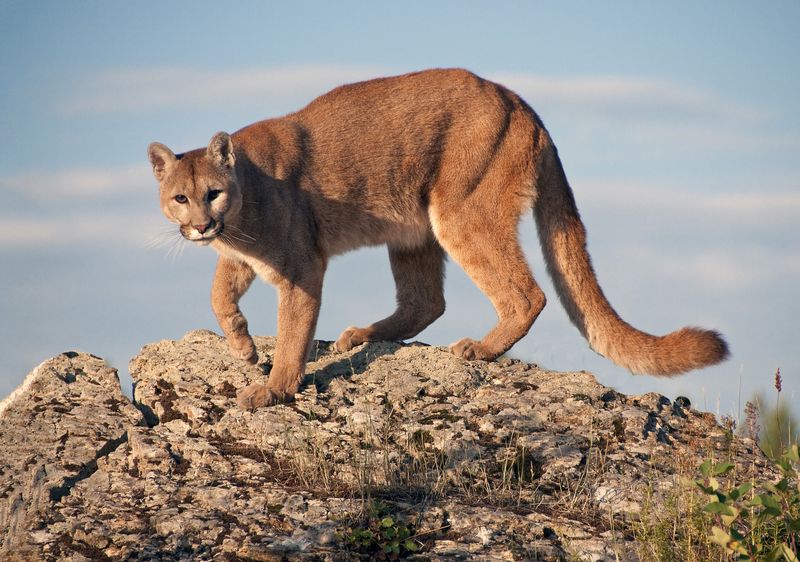
Nevada’s mountain ranges shelter powerful cougars weighing up to 150 pounds. These desert-adapted predators navigate the state’s rugged terrain, from alpine forests to sagebrush valleys.
Masters of water conservation, they can survive with minimal drinking. Nevada Department of Wildlife research indicates healthy populations throughout suitable habitats, with particular concentration in areas supporting mule deer herds, their primary prey in this arid landscape.
27. New Hampshire – Canada Lynx
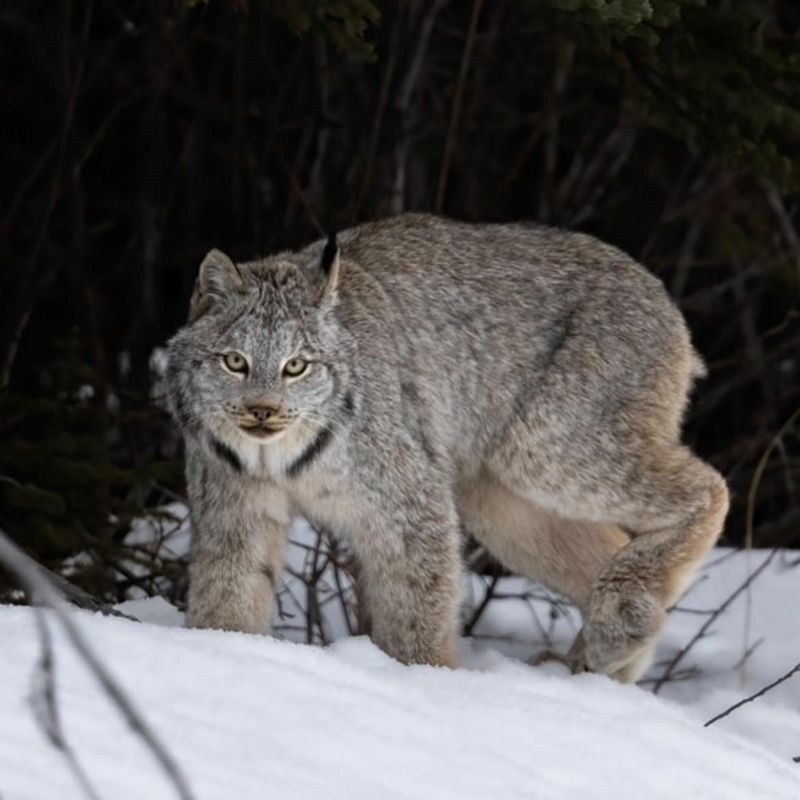
New Hampshire’s northern forests harbor secretive lynx weighing up to 40 pounds. After nearly disappearing from the state, these cold-weather specialists have gradually returned to the Great North Woods region.
Their enormous snowshoe paws provide crucial winter hunting advantages. Conservation partnerships between state agencies and private landowners have focused on protecting spruce-fir habitat critical for both lynx and their primary prey, snowshoe hares.
28. New Jersey – Bobcat

New Jersey’s northern highlands support resilient bobcats weighing up to 30 pounds. Once nearly eliminated, these remarkable cats have slowly recovered in the state’s most rugged regions.
Habitat fragmentation remains their greatest challenge. New Jersey Division of Fish and Wildlife monitoring shows population improvements following their state endangered listing, with strategic land conservation efforts focusing on maintaining habitat connectivity in the heavily developed state.
29. New Mexico – Cougar
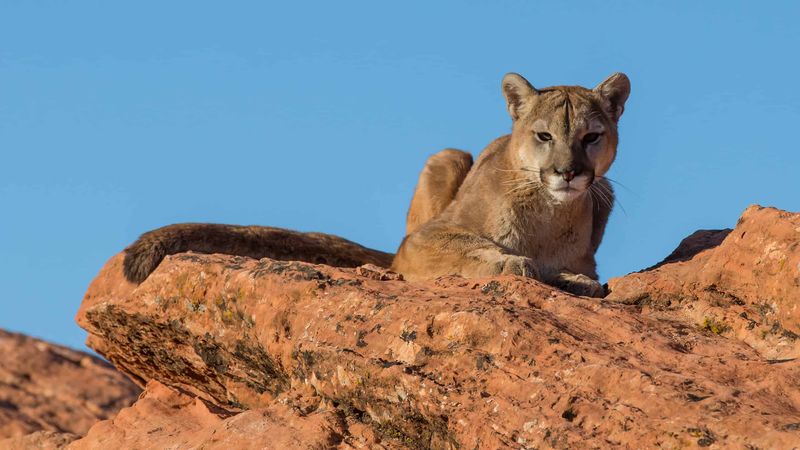
New Mexico’s diverse landscapes support powerful cougars reaching 150 pounds. From alpine mountains to desert canyons, these adaptable predators maintain territories throughout the state’s varied terrain.
Remarkable survivors, they’ve persisted despite centuries of persecution. New Mexico Department of Game and Fish research indicates approximately 3,000-4,000 mountain lions inhabit the state, with particularly healthy populations in the Gila Wilderness and Sangre de Cristo Mountains.
30. New York – Bobcat
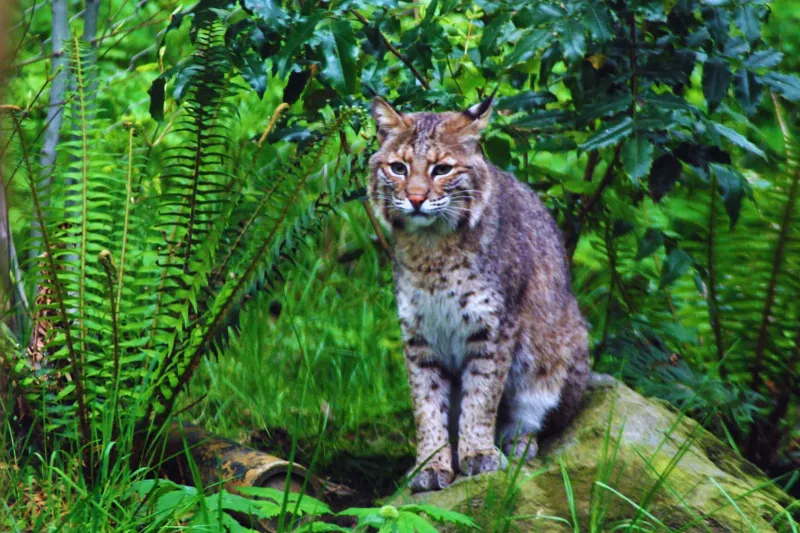
New York’s Adirondack region harbors secretive bobcats weighing up to 30 pounds. These hardy predators thrive in the state’s mountainous regions and have gradually expanded their range southward.
Surprisingly adaptable, some individuals now inhabit suburban areas with adequate forest fragments. New York DEC tracking studies have documented their remarkable ability to persist near human development while remaining largely undetected, a testament to their secretive nature.
31. North Carolina – Bobcat
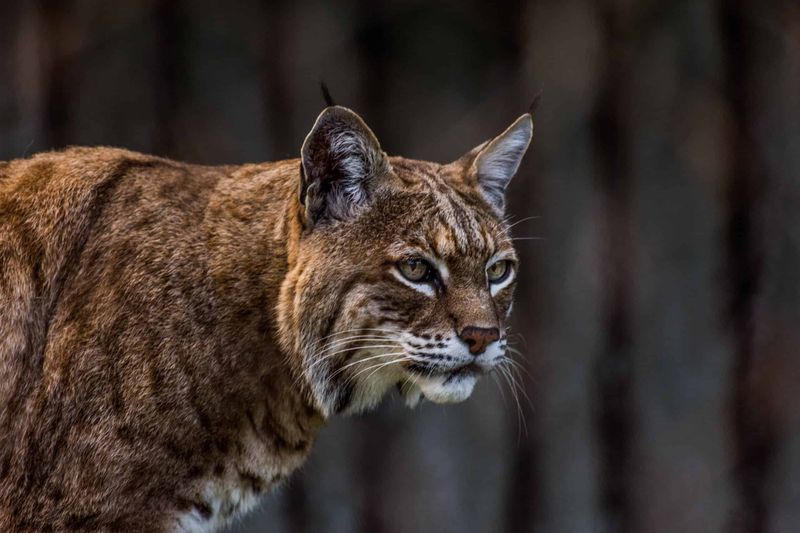
North Carolina’s diverse habitats support robust bobcats reaching 30 pounds. From coastal swamps to mountain forests, these adaptable hunters maintain territories throughout the state.
Remarkable survivors, they’ve persisted despite significant habitat changes. North Carolina Wildlife Resources Commission research indicates healthy populations statewide, with trail camera studies documenting their presence in surprising locations, including barrier islands and suburban greenways.
32. North Dakota – Cougar
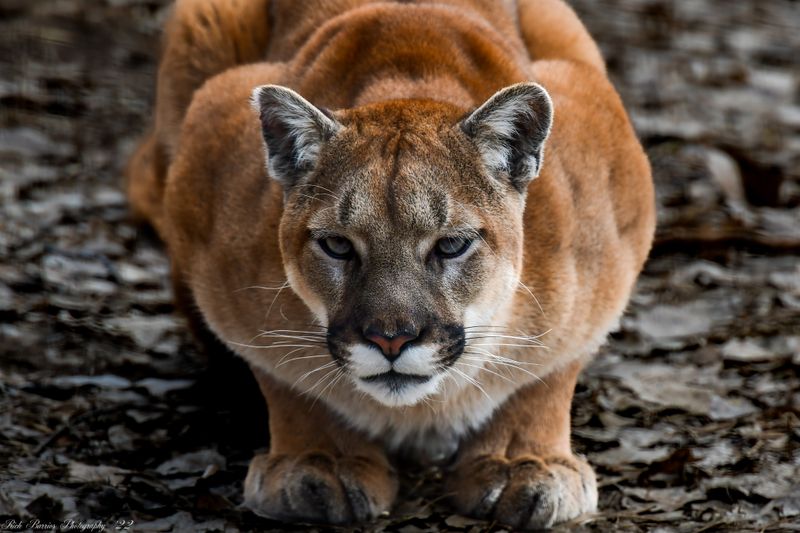
North Dakota’s western badlands support expanding cougar populations reaching 150 pounds. After disappearing in the early 1900s, these magnificent cats began naturally returning to the state in the 1990s.
River corridors provide natural travel routes across the prairie landscape. North Dakota Game and Fish Department tracks confirmed sightings, documenting their gradual recolonization from western breeding populations, particularly in the rugged Little Missouri Badlands region.
33. Ohio – Bobcat
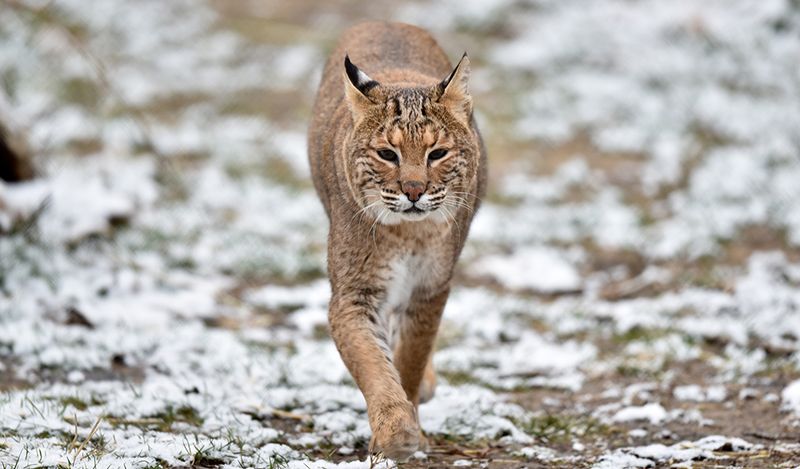
Ohio’s southeastern hills harbor recovering bobcat populations weighing up to 30 pounds. Once eliminated from the state, these resilient predators have naturally recolonized suitable habitat in the Appalachian foothills.
Abandoned coal mines provide unexpected denning opportunities. Ohio Division of Wildlife research using GPS collars reveals their movement patterns through fragmented forest patches, documenting their remarkable ability to persist in landscapes altered by centuries of human development.
34. Oklahoma – Bobcat
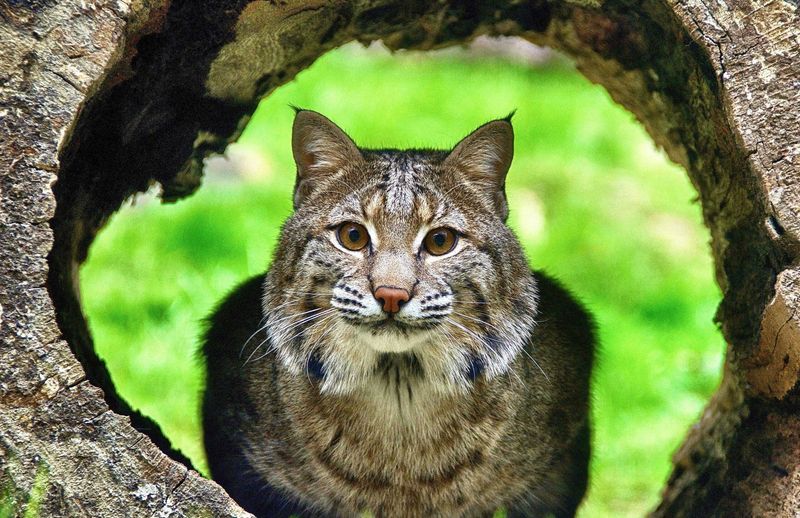
Oklahoma’s varied landscapes support thriving bobcat populations reaching 30 pounds. From eastern forests to western mesas, these adaptable hunters maintain territories throughout the state.
Remarkably drought-resistant, they’ve evolved to survive in challenging conditions. Oklahoma Department of Wildlife Conservation research indicates they play crucial ecological roles by controlling rodent populations, particularly in agricultural areas where they help reduce crop damage.





